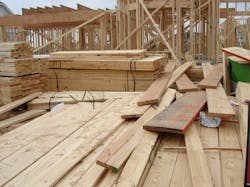Construction Prices Surge to Largest Monthly Increase in a Decade
Prices for inputs to construction materials expanded 2.2% in May and are 8.8% higher than at the same time one year ago, according to an Associated Builders and Contractors (ABC) analysis of U.S. Bureau of Labor Statistics data. It was the largest monthly increase in 10 years (since May 2008). Nonresidential construction input prices increased 2.3% for the month and 8.9% for the year.
“While rapidly rising construction materials prices partially reflect economic strength, for the most part today’s release should be viewed as bad news,” said ABC Chief Economist Anirban Basu. “As economists have been suggesting for many months, inflationary pressures are building. One can observe this in labor markets as well as in the price of gasoline, health care and construction materials.
“The current economic expansion, the second lengthiest in American history, has been built in large measure on persistently low interest rates, which stand to eventually disappear as inflationary pressures become increasingly apparent. Real estate and construction cycles are especially vulnerable to increases in borrowing costs.
“But there is more at work than unfettered economic progress,” said Basu. “Construction materials are becoming increasingly expensive because of policymaking. All eyes are on prices of metals, which are increasing briskly. On a year-over-year basis, iron and steel prices are up nearly 13 percent. Steel mill product prices are up nearly 11 percent. Separately, the price of softwood lumber, which is the subject of a dispute with the Canadians, is up more than 15 percent compared to a year ago.
“These dynamics are fraught with unforeseeable consequences,” said Basu. “For instance, will the rise in materials prices induce diminishing demand for construction services? Will more expensive materials prices squeeze contractor margins? Moreover, if the general increase in various prices triggers rapidly rising interest rates, it would presumably truncate the ongoing economic expansion, now in its 10th year. All of this suggests that contractors should be rooting vigorously against full-blown trade wars, which would only serve to exacerbate already observable, problematic trends.”
